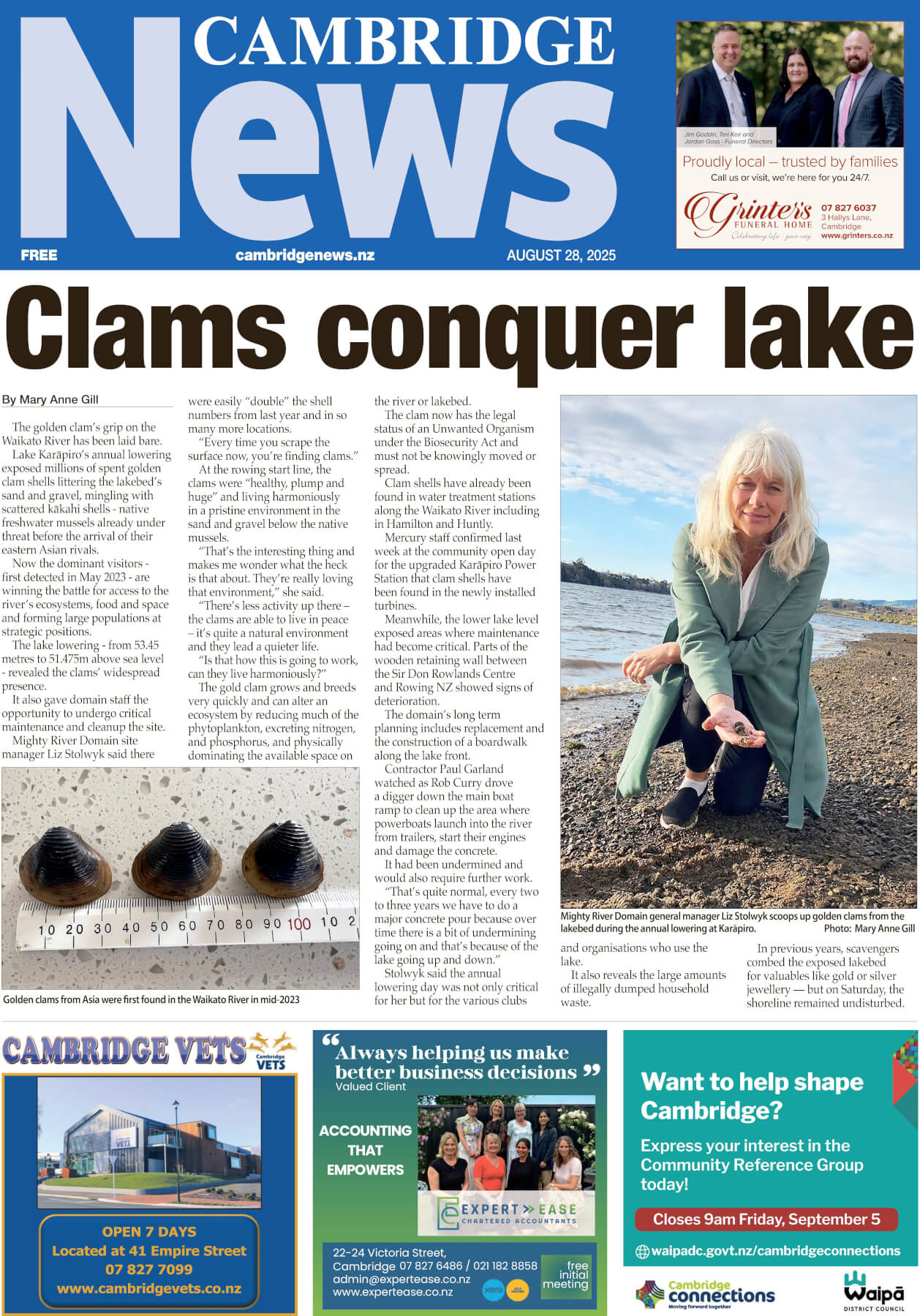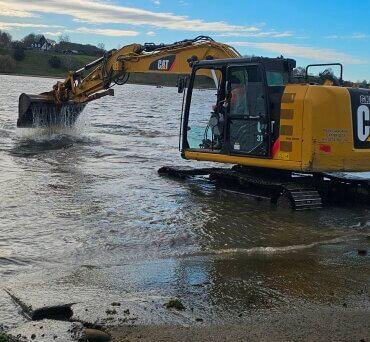
Lake Karapiro lowering Aug 2025
The golden clam’s grip on the Waikato River has been laid bare.
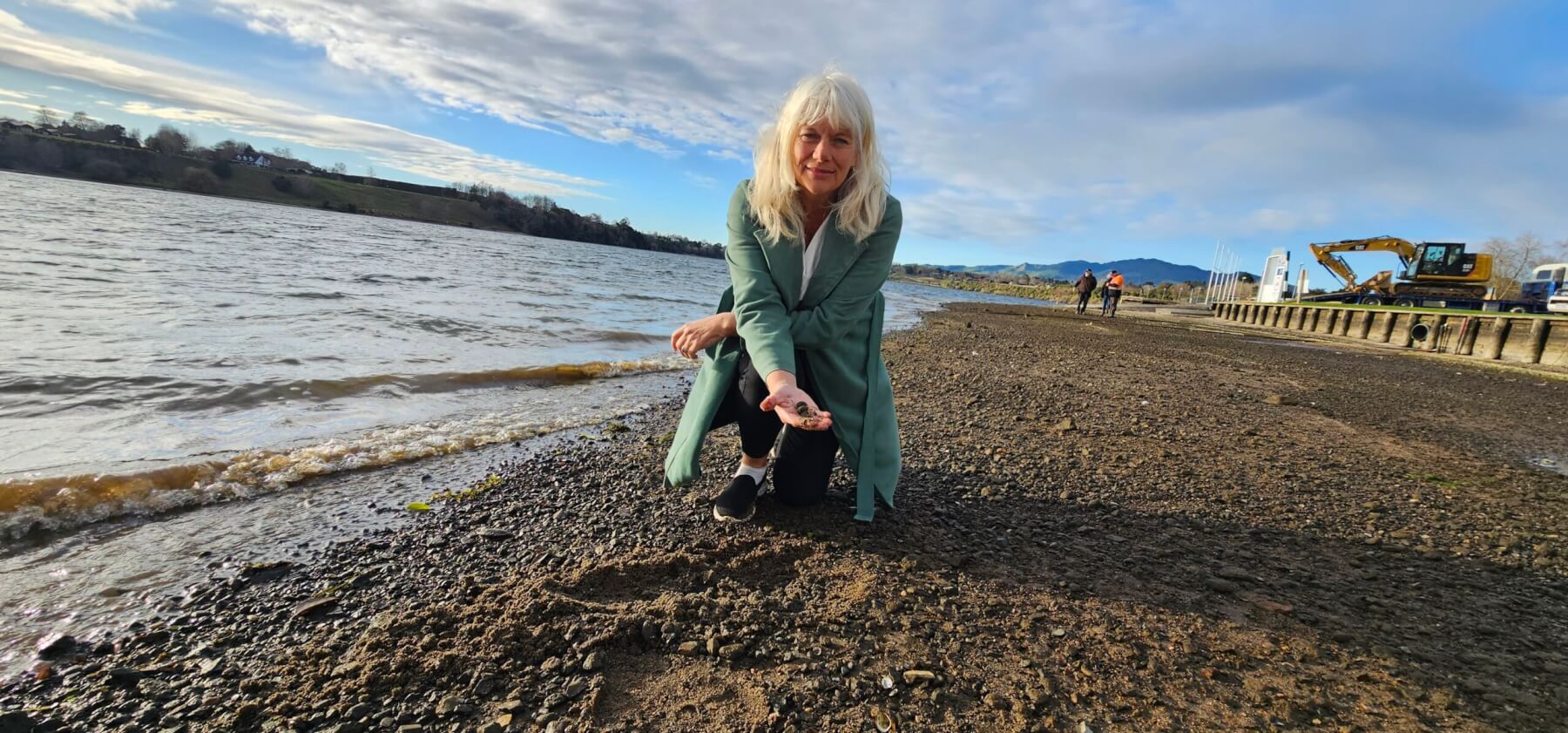
Mighty River Domain general manager Liz Stolwyk scoops up golden clams from the lakebed during the annual lowering at Karāpiro. Photo: Mary Anne Gill
Lake Karāpiro’s annual lowering exposed millions of spent golden clam shells littering the lakebed’s sand and gravel, mingling with scattered kākahi shells – native freshwater mussels already under threat before the arrival of their eastern Asian rivals.
Now the dominant visitors – first detected in May 2023 – are winning the battle for access to the river’s ecosystems, food and space and forming large populations at strategic positions.
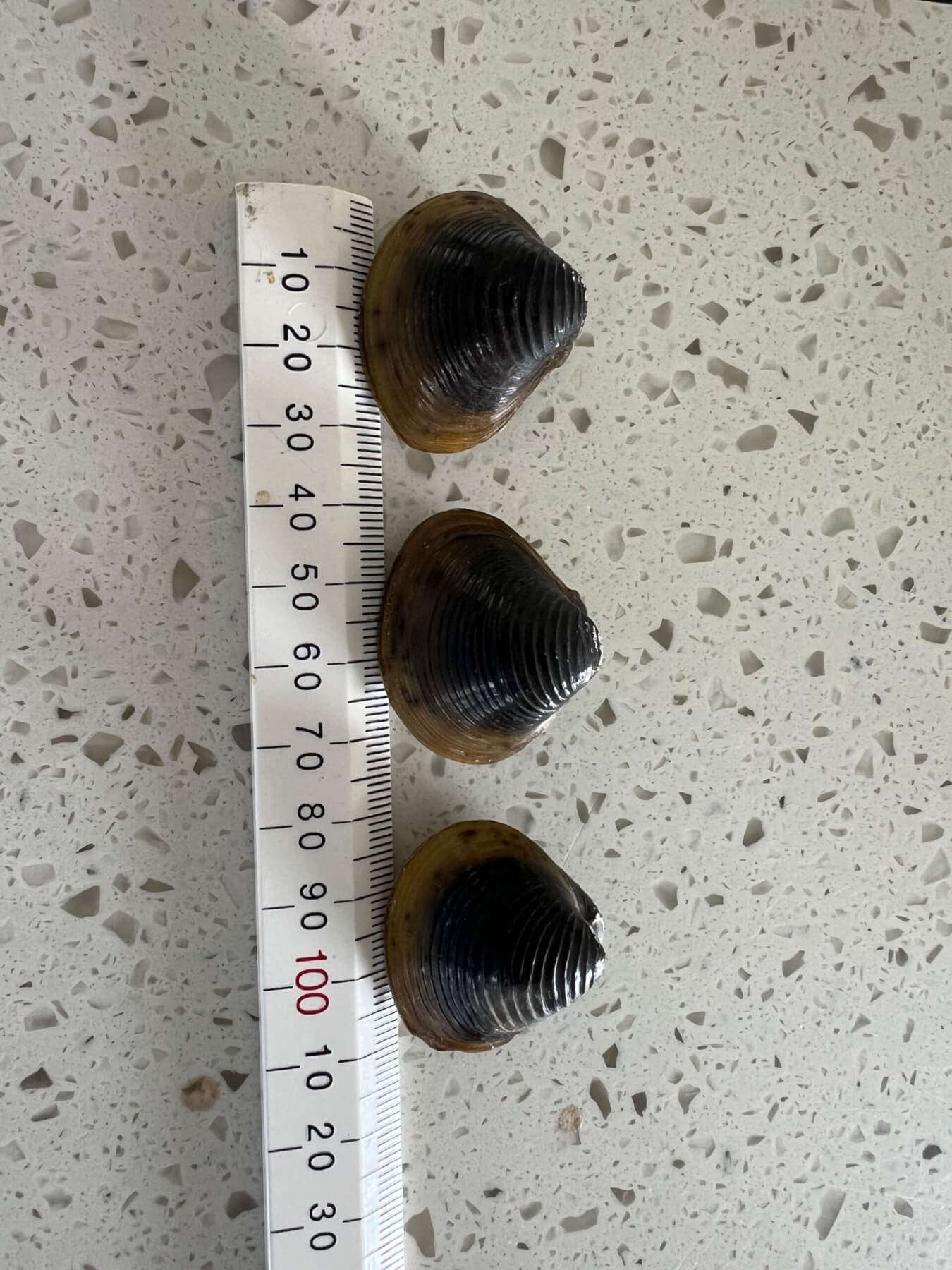
Three “juicy” clams from the rowing start.
The lake lowering – from 53.45 metres to 51.475m above sea level – revealed the clams’ widespread presence.
It also gave domain staff the opportunity to undergo critical maintenance and cleanup the site.
Mighty River Domain site manager Liz Stolwyk said there were easily “double” the shell numbers from last year and in so many more locations.
“Every time you scrape the surface now, you’re finding clams.”
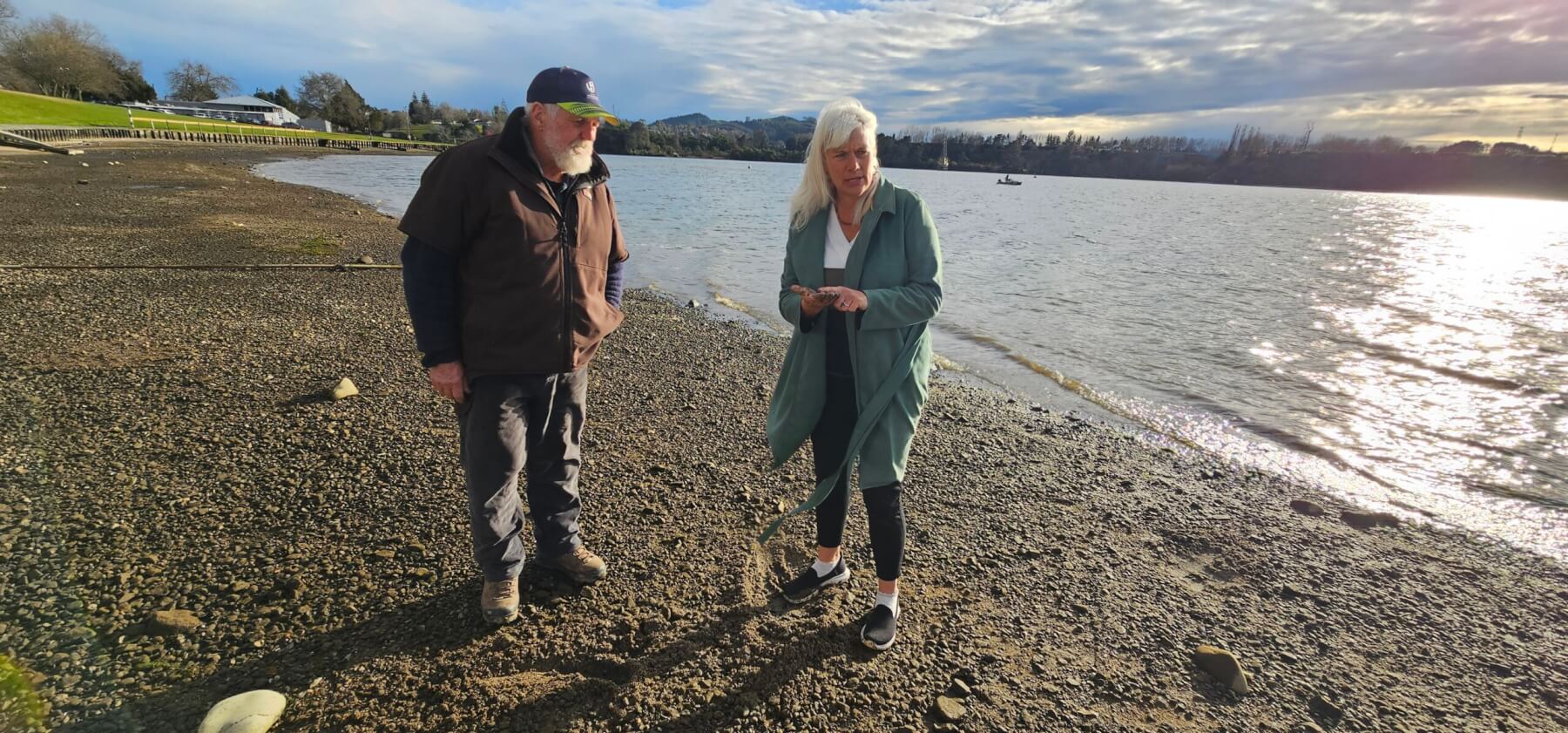
Mighty River Domain general manager Liz Stolwyk shows contractor Paul Garland how many clam shells there are on the lakebed during the annual lowering at Karāpiro. Photo: Mary Anne Gill
At the rowing start line, the clams were “healthy, plump and huge” and living harmoniously in a pristine environment in the sand and gravel below the native mussels.
“That’s the interesting thing and makes me wonder what the heck is that about. They’re really loving that environment,” she said.
“There’s less activity up there – the clams are able to live in peace – it’s quite a natural environment and they lead a quieter life.
“Is that how this is going to work, can they live harmoniously?”
The gold clam grows and breeds very quickly and can alter an ecosystem by reducing much of the phytoplankton, excreting nitrogen, and phosphorus, and physically dominating the available space on the river or lakebed.

Great day for a picnic: This family group of Auckland-based Filipinos came down to Lake Karāpiro for an opportunity to see the lake lowered, from left, back row: Gary Maglalang, Elizabeth and Jennifer Dela Cruz, Roiland Masacayan, Unica Villena , Jake Romar Masacayan, Roiland Masacayan Snr, Marley Kyle Masacayan, Jerome Dela Cruz Roberto Dela Cruz; front row: Alecx Espinola, Jhen and Robert Espinola, Marly Kylie and Luisa Masacayan. Photo: Mary Anne Gill
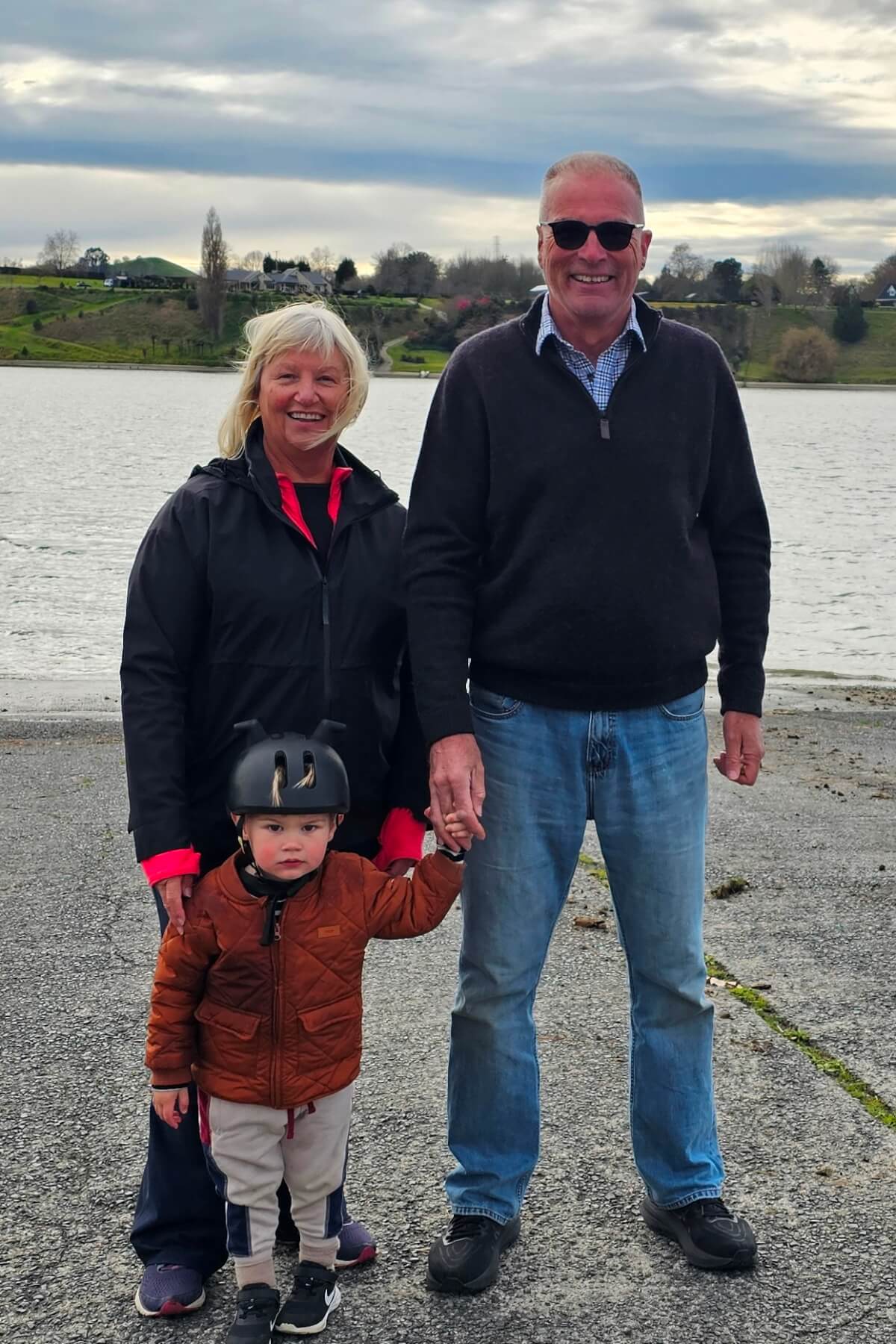
Early morning bike ride: Rupert Robertson, 2 ½, out cycling around Lake Karāpiro with his grandparents Mark and Virginia Spoors. Photo: Mary Anne Gill
The clam now has the legal status of an Unwanted Organism under the Biosecurity Act and must not be knowingly moved or spread.
Clam shells have already been found in water treatment stations along the Waikato River including in Hamilton and Huntly.
Mercury staff confirmed last week at the community open day for the upgraded Karāpiro Power Station that clam shells have been found in the newly installed turbines.
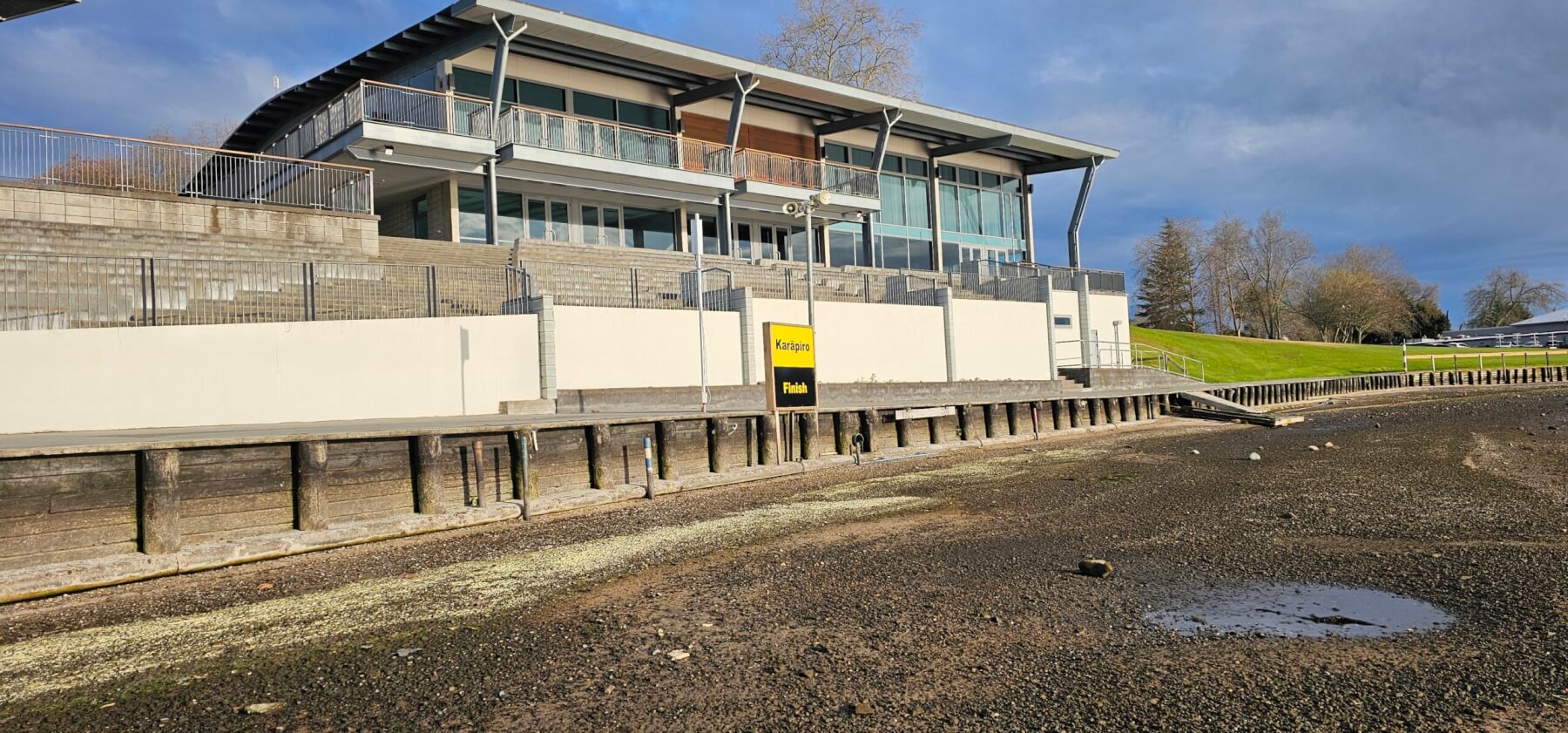
Tide’s out: The finish line in front of the Sir Don Rowlands Centre. Photo: Mary Anne Gill
Meanwhile, the lower lake level exposed areas where maintenance had become critical. Parts of the wooden retaining wall between the Sir Don Rowlands Centre and Rowing NZ showed signs of deterioration.
The domain’s long term planning includes replacement and the construction of a boardwalk along the lake front.
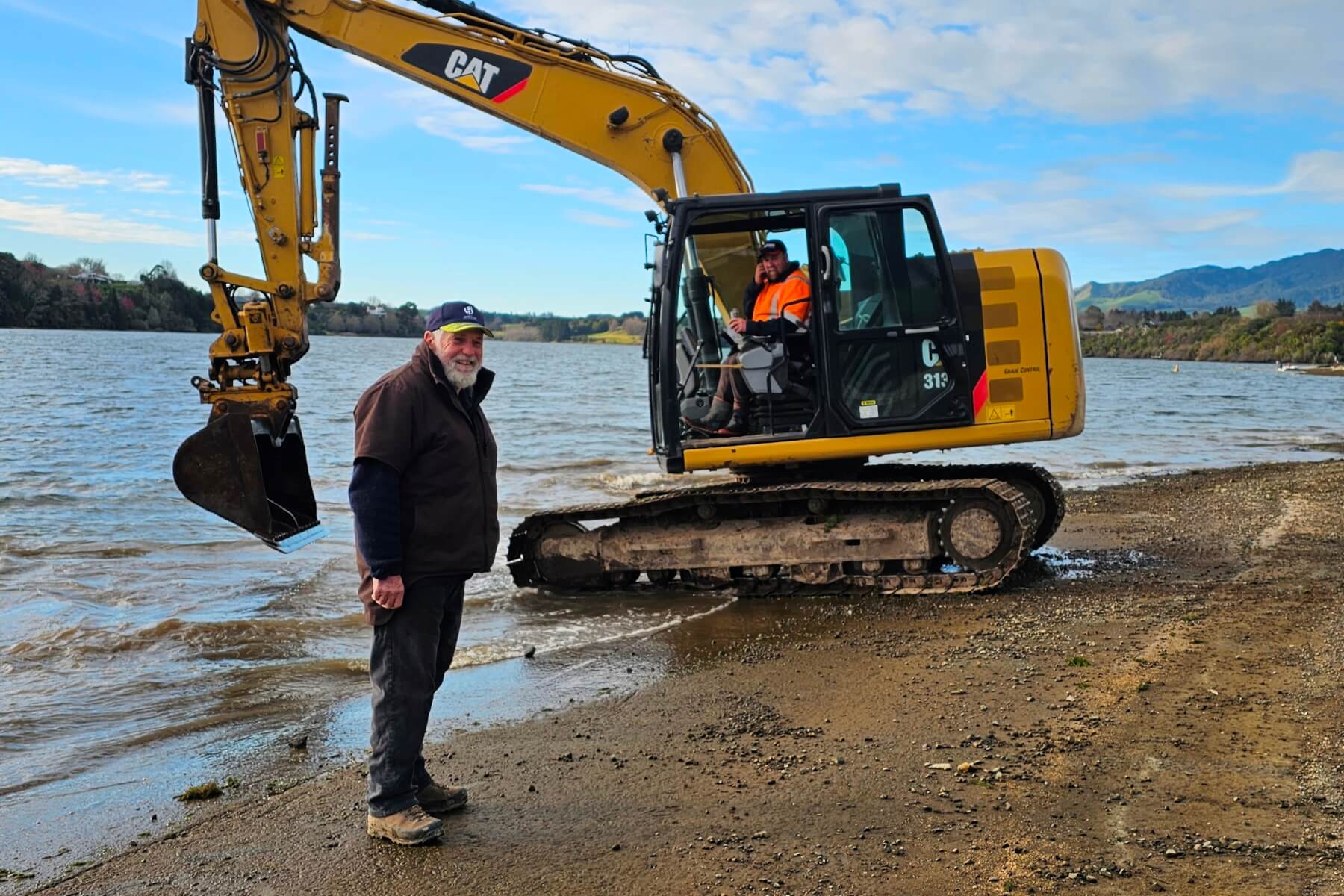
Contractor Paul Garland in front of his digger and driver Rob Curry as it prepares to clean up any damage caused by boats on the launching pad. Photo: Mary Anne Gill
Contractor Paul Garland watched as Rob Curry drove a digger down the main boat ramp to clean up the area where powerboats launch into the river from trailers, start their engines and damage the concrete.
It had been undermined and would also require further work.
“That’s quite normal, every two to three years we have to do a major concrete pour because over time there is a bit of undermining going on and that’s because of the lake going up and down.”
Stolwyk said the annual lowering day was not only critical for her but for the various clubs and organisations who use the lake.
It also reveals the large amounts of illegally dumped household waste.
In previous years, scavengers combed the exposed lakebed for valuables like gold or silver jewellery — but on Saturday, the shoreline remained undisturbed.
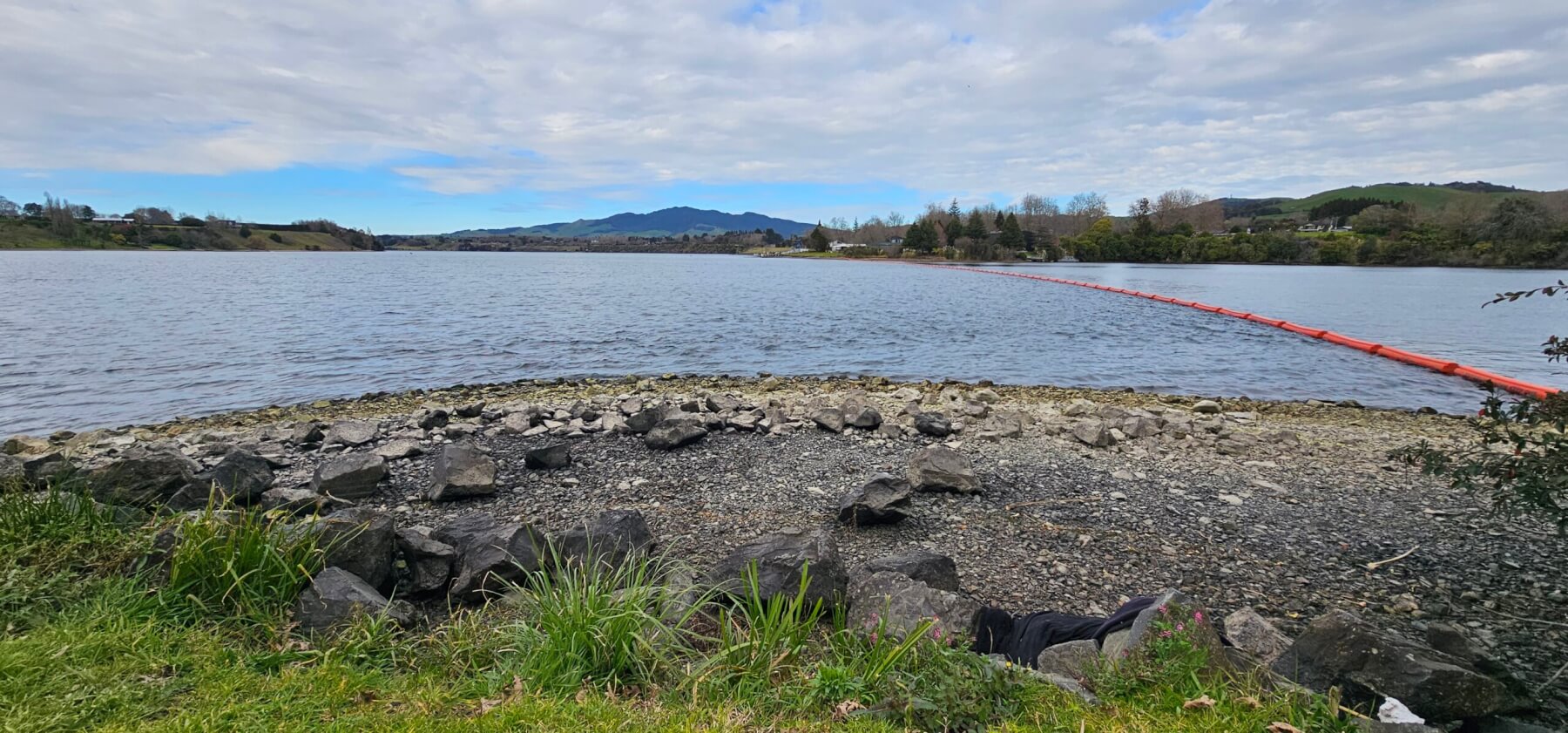
Lake Karāpiro at its lowest level of the year.
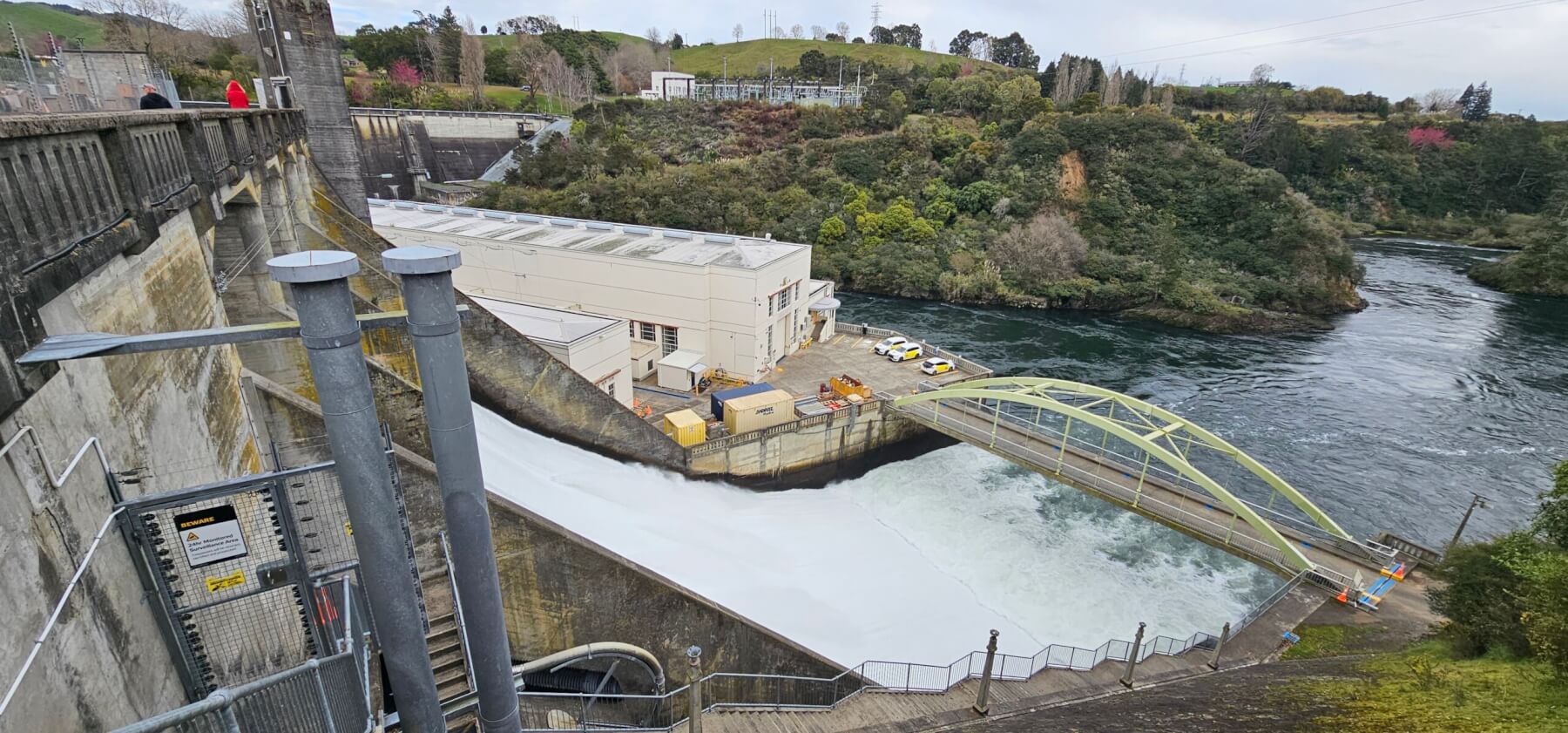
The Karāpiro hydro dam releases water through the new turbines.
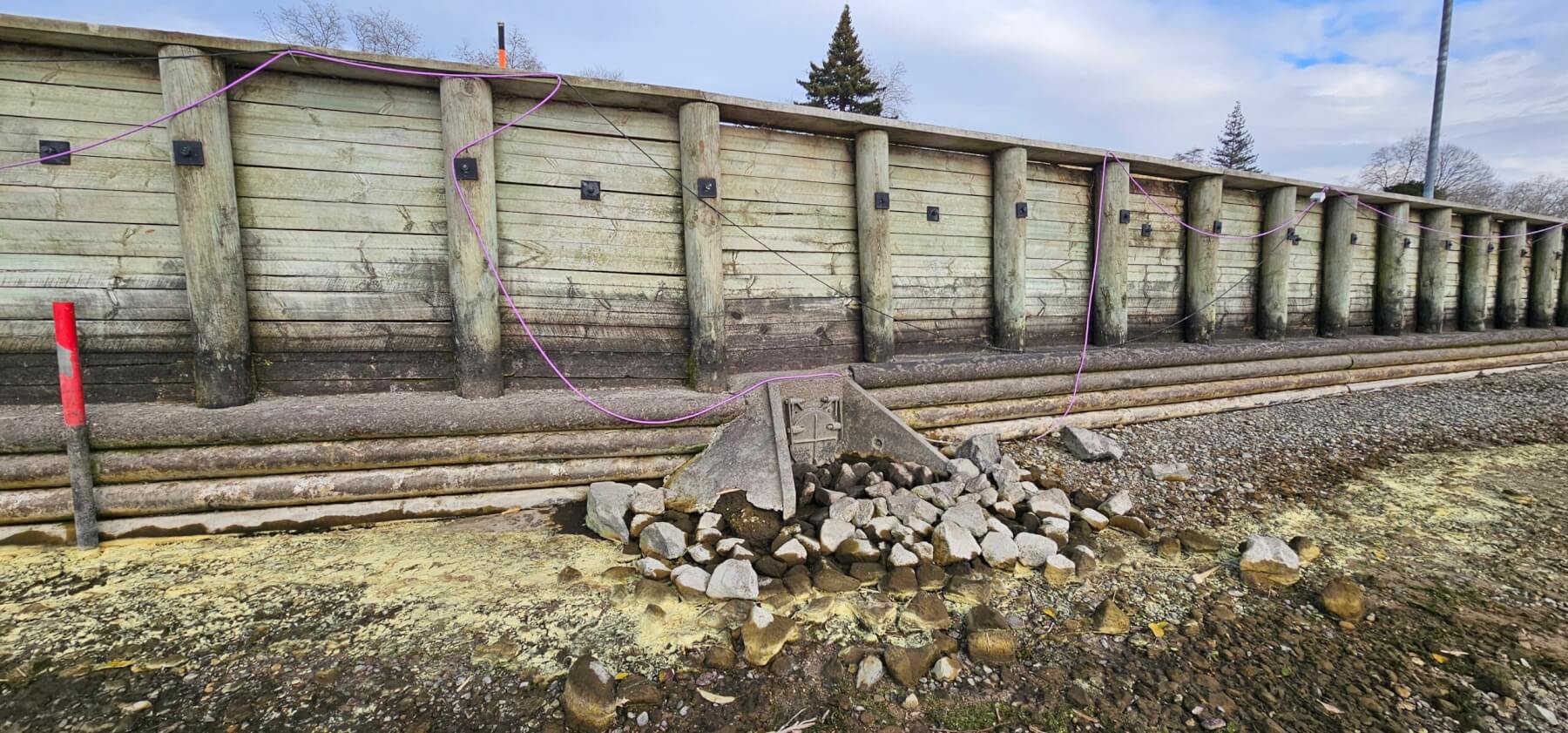
Lake Karapiro lowering Aug 2025
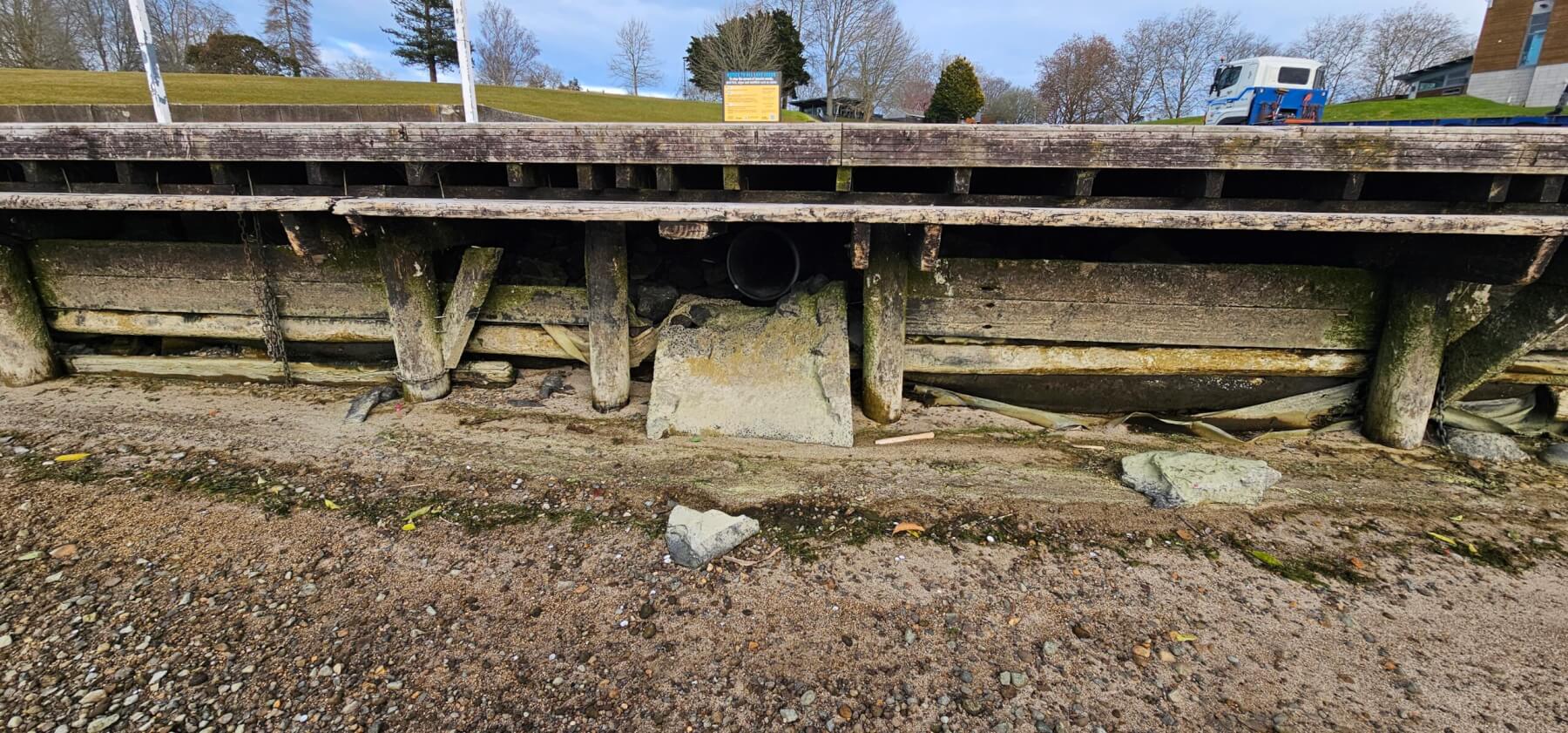
Lake Karapiro lowering Aug 2025
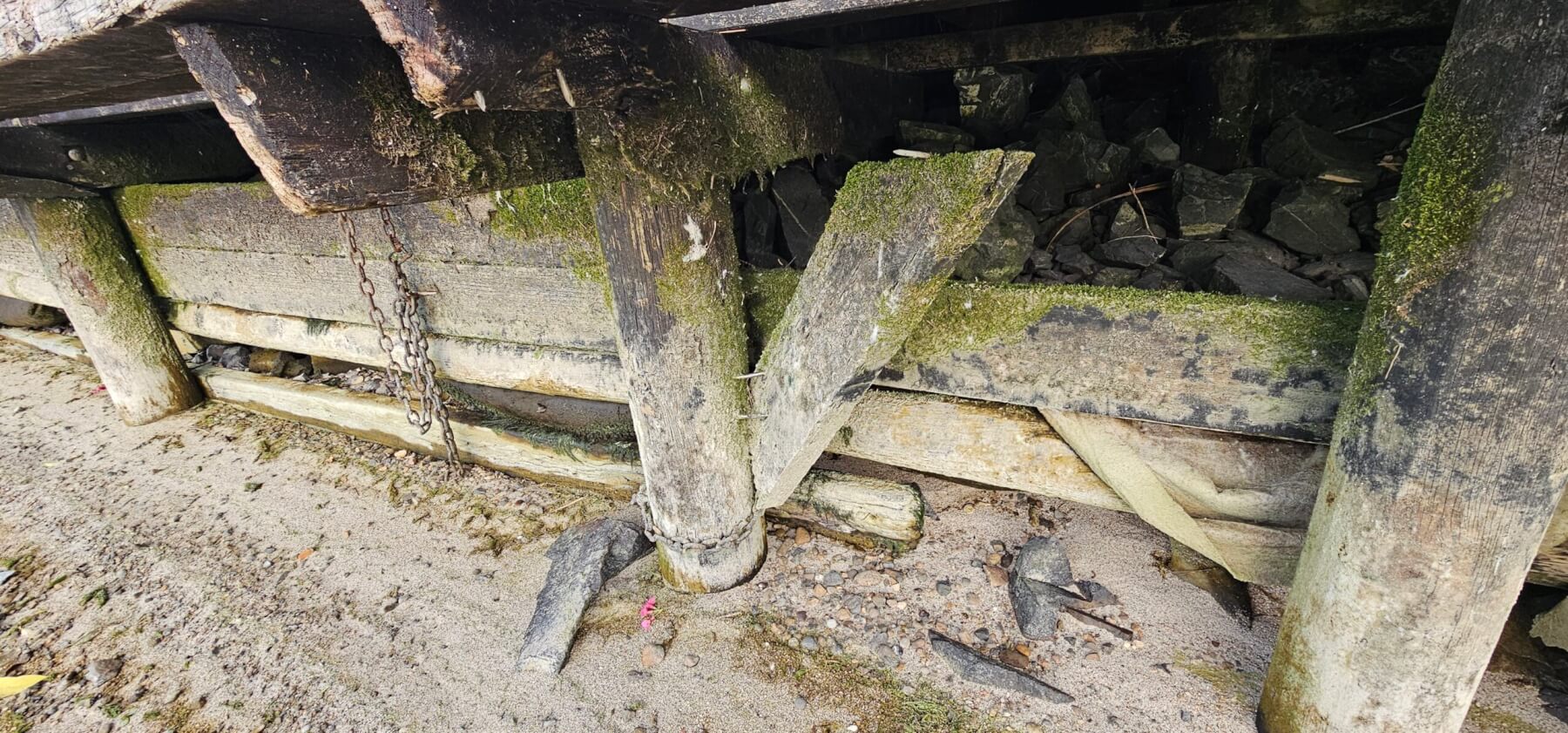
Lake Karapiro lowering Aug 2025
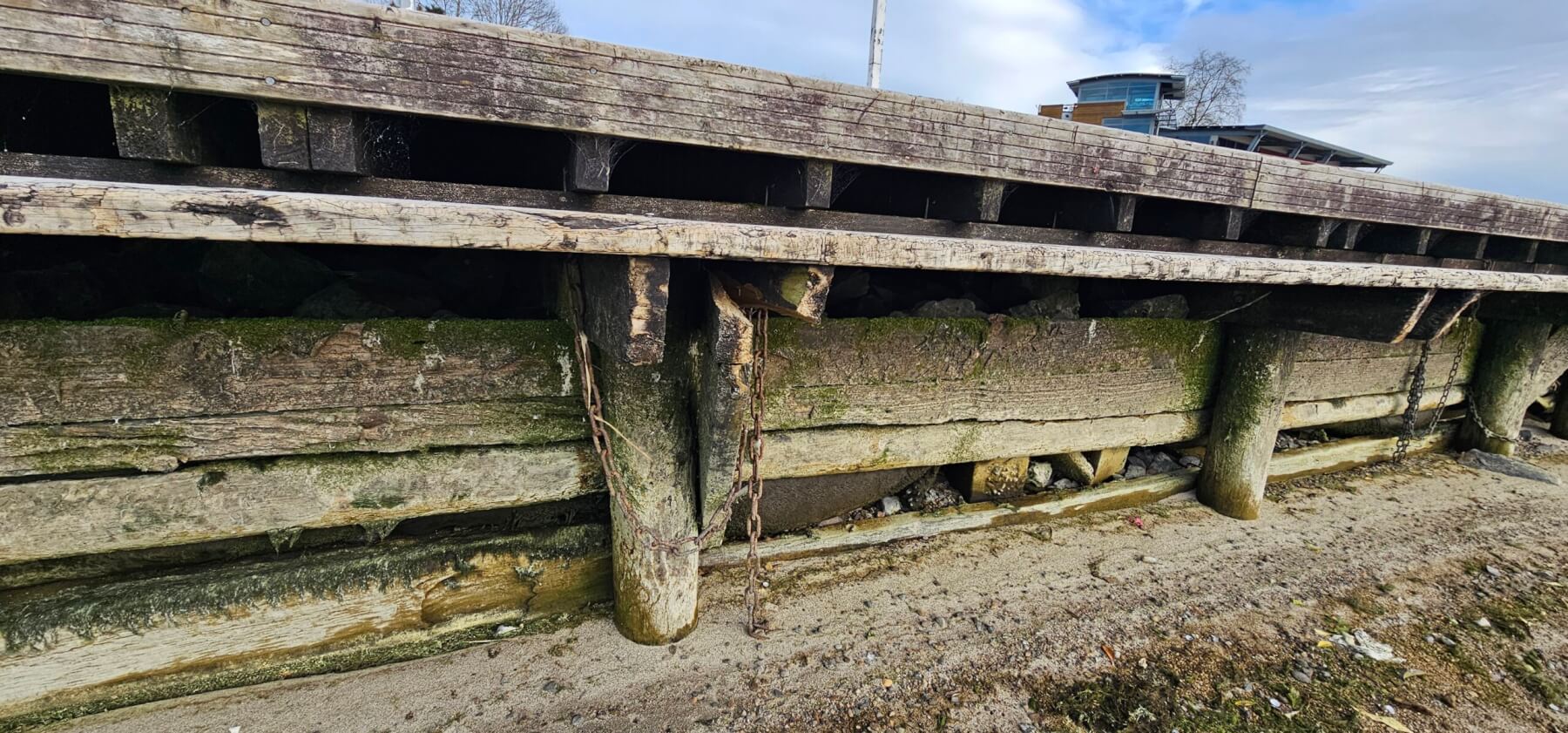
Lake Karapiro lowering Aug 2025
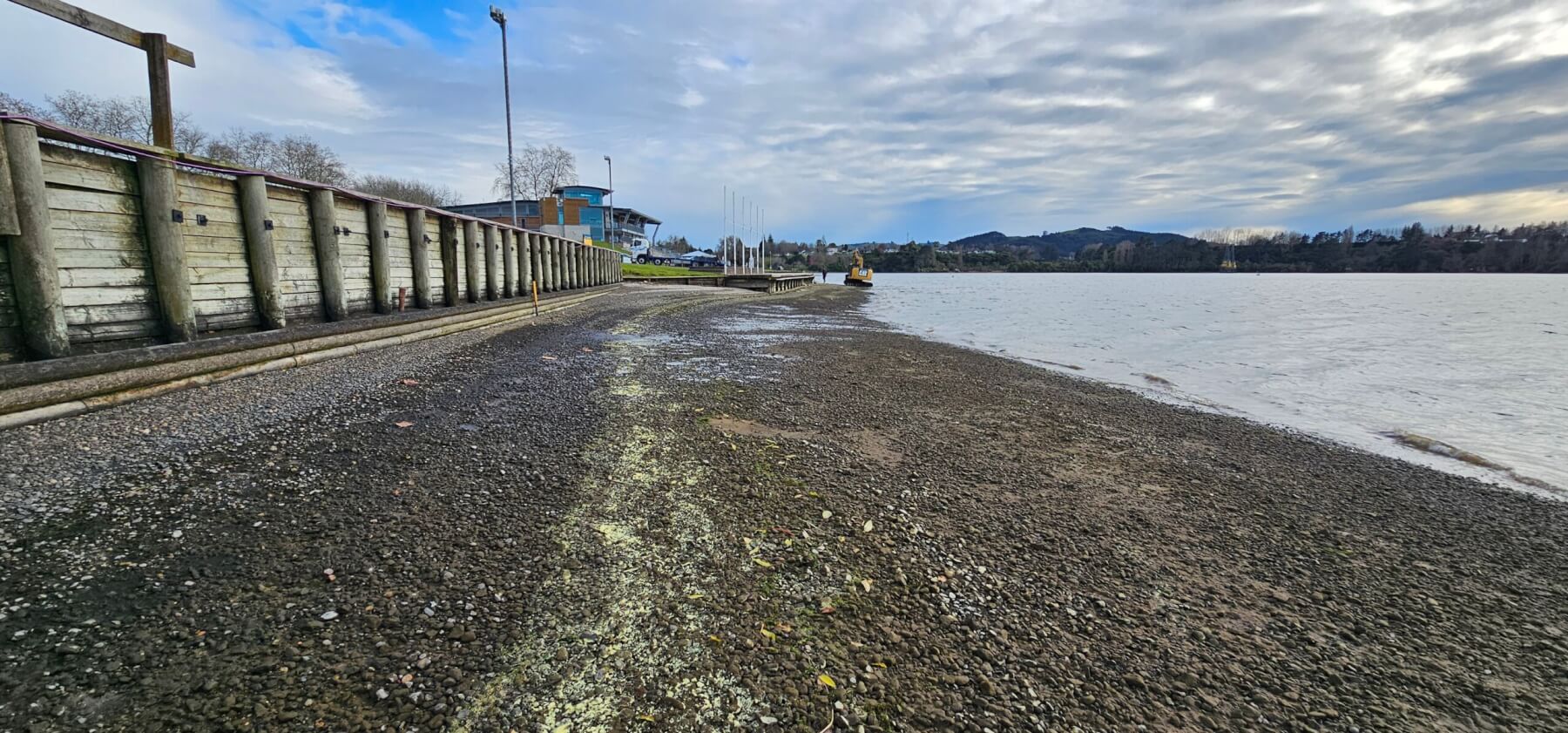
Lake Karapiro lowering Aug 2025



